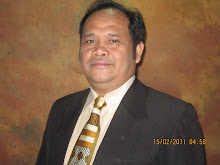The Impact of Machine Learning on Economics by Susan Athey
Tuesday, January 21, 2025
In her article "The Impact of Machine Learning on Economics" (2018), Susan Athey provides an in-depth exploration of how machine learning is poised to revolutionize the field of economics and public policy. She emphasizes that this technology opens up new opportunities to address complex economic problems, particularly in prediction, causal analysis, and personalized policy design.
Athey explains that machine learning, with its ability to process large and complex datasets, excels at generating highly accurate predictions. This capability is invaluable in forecasting various outcomes, such as consumer behavior, household spending patterns, or labor market trends. However, she stresses that the power of machine learning extends beyond prediction—it also aids causal analysis, which involves understanding cause-and-effect relationships. For instance, machine learning can be used to evaluate the impact of subsidies on energy consumption or to determine how job training programs influence income growth.
One of Athey's key contributions is clarifying the distinction between prediction and causal analysis. Prediction focuses on forecasting future outcomes based on historical data patterns, while causal analysis aims to understand the specific effects of a policy or intervention. Machine learning, when paired with traditional statistical methods, can address challenges in both areas, offering innovative solutions to longstanding economic questions.
Athey highlights several machine learning methods relevant to economics, such as random forests and causal forests. These approaches not only enhance predictive accuracy but also allow for deeper insights into how policies might affect different segments of the population. For example, causal forests can help policymakers design interventions tailored to vulnerable groups, such as low-income households or at-risk students.
She provides practical examples of how machine learning can be applied in public policy. Governments can use this technology to target social assistance to the most disadvantaged populations, improve educational outcomes by identifying students at risk of dropping out, or design data-driven health policies to boost vaccination compliance. With its ability to personalize policies, machine learning has the potential to make public programs more efficient and effective.
Despite its promise, Athey acknowledges the challenges associated with applying machine learning in economics. One major issue is data bias—if the data used to train algorithms are biased, the resulting predictions and decisions will reflect these biases. Additionally, machine learning models are often seen as "black boxes," making it difficult to interpret their results, which can hinder their application in public decision-making. Ethical and privacy concerns are also significant, particularly when using big data to inform policies.
Through this article, Susan Athey underscores the importance of collaboration between economists, data scientists, and policymakers to fully harness the potential of machine learning. By integrating this modern technology with traditional economic approaches, machine learning can become a powerful tool for advancing economic analysis and implementing more effective public policies. The article represents a major step forward in bridging the gap between economics and technological innovation, demonstrating how these advancements can be leveraged to create meaningful and positive societal impacts.
Review
In her article "The Impact of Machine Learning on Economics" (2018), Susan Athey presents a pivotal discussion on how machine learning is transforming economics and public policy. She highlights that this technology goes beyond improving prediction accuracy; it also supports causal analysis—uncovering cause-and-effect relationships, such as the impact of subsidies on consumption or job training on income. Using tools like causal forests, Athey emphasizes the potential for personalized policies to address the specific needs of vulnerable groups, such as at-risk students or low-income households.
Athey also acknowledges key challenges, including data bias, privacy concerns, and the "black box" nature of machine learning algorithms, which can limit their interpretability. While the article provides examples of applications in education, healthcare, and poverty alleviation, it lacks empirical studies to solidify its claims. Furthermore, its technical depth might be less accessible to non-technical readers.
Despite these limitations, the article remains a significant contribution, bridging the fields of economics and modern technology. By incorporating concrete evidence and a stronger focus on ethics, it could serve as a strategic guide for interdisciplinary collaboration needed to create impactful, data-driven policies.
Read more...